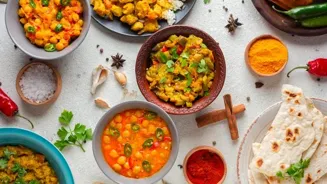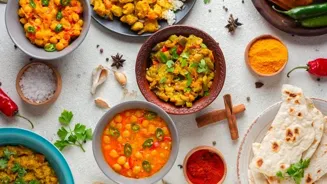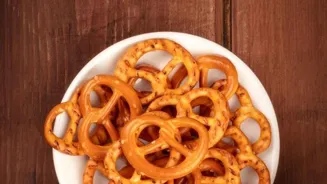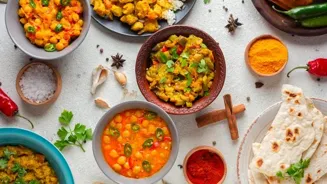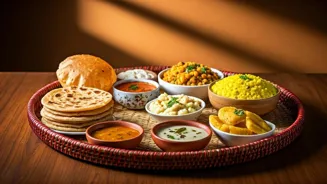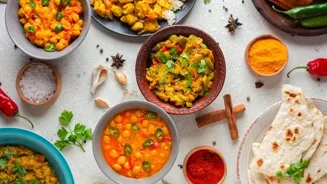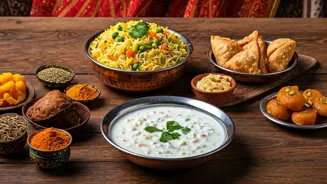Discover the Evolution of Indian Fast Food: Balancing Tradition and Modernity. Read on for a flavorful journey!
India, a land of vibrant cultures and diverse cuisines, has always held its traditional food
close to its heart. But with a rapidly changing world and the increasing pace of life, even the most cherished culinary traditions are evolving.

The Indian fast food scene is a perfect example of this adaptation, where age-old recipes are being reimagined to fit the modern lifestyle. This isn't about replacing traditional dishes; it's about making them more accessible and convenient for today's generation.
Indian fast food industry innovates traditional flavors for on-the-go consumers
The growth of the Indian fast food industry has been remarkable in recent years. No longer are people solely reliant on international burger chains or pizza parlours.
Instead, they are seeking out familiar flavors, those that remind them of home, but in a format that suits their on-the-go lifestyles. This demand has spurred innovation, with local vendors and established restaurants alike experimenting with new ways to present traditional Indian snacks and meals.
The key is retaining the authenticity of the taste while ensuring quick preparation and easy consumption.
Traditional Indian snacks evolve with bite-sized, healthy options to suit modern tastes
Traditional Indian snacks like samosas, kachoris, and pakoras have always been popular. However, their preparation can be time-consuming, making them less suitable for a quick bite. Now, we see bite-sized versions of these snacks, often baked instead of fried to cater to health-conscious consumers.
Innovative fillings are also being introduced, blending traditional Indian spices with global ingredients. This fusion approach appeals to a wider audience, especially the younger generation, who are open to experimenting with new flavors.
Dosa and idli, South India's culinary gems, are also undergoing a transformation. Instead of the traditional large portions, mini versions are becoming increasingly popular.
These bite-sized dosas and idlis are often served with a variety of chutneys and sambar, making them a complete and satisfying meal on the go.
Indian fast food evolves with focus on healthy options, reflecting changing consumer mindset
One of the most significant adaptations in the Indian fast food scene is the focus on healthy options. With rising awareness about health and wellness, consumers are demanding food that is not only tasty but also nutritious.
This has led to the incorporation of healthier ingredients and cooking methods in traditional snacks and meals. For example, millet-based versions of roti and paratha are gaining popularity, offering a gluten-free and nutrient-rich alternative to wheat-based options.
Similarly, air frying and baking are becoming preferred methods of cooking, reducing the use of oil without compromising on taste.
This shift towards healthier options is not just a trend; it's a reflection of a changing mindset, where people are prioritizing their health without sacrificing their love for traditional Indian flavors.
The digital revolution boosts Indian fast food evolution
The digital revolution has also played a crucial role in the evolution of Indian fast food. Online food delivery platforms have made it easier than ever for people to access their favorite Indian snacks and meals, no matter where they are.

This has created a level playing field for small vendors and home-based businesses, allowing them to reach a wider audience without the need for a physical storefront.
Social media is also being used to promote innovative Indian fast food concepts, with food bloggers and influencers showcasing the latest trends and creations.
This digital ecosystem has not only boosted the popularity of Indian fast food but has also fostered a culture of innovation and experimentation.
Indian fast food evolves to meet health-conscious, modern demands
The future of Indian fast food looks promising. As consumers become more health-conscious and time-crunched, the demand for easily accessible, nutritious, and flavorful Indian snacks and meals will only continue to grow.
This will drive further innovation in the industry, with new ingredients, cooking methods, and presentation styles being explored.
The key to success will be striking a balance between honoring tradition and embracing modernity, ensuring that the essence of Indian cuisine remains while adapting to the needs of the modern consumer.
The evolution of Indian fast food is a testament to the resilience and adaptability of Indian culture, proving that even the most cherished traditions can thrive in a rapidly changing world.
It’s about creating food that is both convenient and comforting, a taste of home in a format that suits the pace of modern life.
AI Generated Content. Glance/InMobi shall have no liability for the content